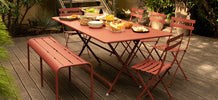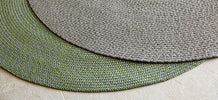Circuit types
Most of our string lighting and connectable lighting (such as the Garden Zone Collect and Connect) are wired as either a series or a parallel circuit. The way a set of lamps is wired determines how a set of lights will function if there is a breakage in the wiring or bulbs. Both series and parallel circuits have their advantages and disadvantages. We will elaborate on this page.
Series circuits
In layman terms, this is a circuit where components are wired in a loop one after the other:
One benefit of wiring lamps in this way is you can keep the amount of wiring to a minimum, which will look more elegant especially in the case of string lighting. However, the major disadvantage of series circuits is once you get a break in the circuit at any point, you break the whole loop and as such all the lights along the same circuit will stop working:
Parallel circuits
A parallel circuit consists of a series of loops, rather than just one single loop. Each lamp is therefore wired individually to the power source as shown in this diagram:
While parallel circuits are more complex in terms of wiring, the looped nature of every component means that even if one lamp stops working, the other lamps will be unaffected by this break in the circuit:
Lamps connected in a parallel circuit also tend to maintain their brightness compared to lamps connected in a series circuit. This is because each lamp draws an equal amount of energy from the power source to illuminate each bulb individually. Lamps wired in series circuits, on the other hand, glow dimmer as energy is lost as it travels through each bulb and into the next. The circuit compensates by dividing the current across the number of bulbs there are.
For more information...
Please do not hesitate to get in touch with us if you are having trouble understanding series and parallel circuits, or if you would like more information about a particular light. We will be more than happy to help!
Our telephone number is 0345 605 2505, or drop us an email at customerservices@worm.co.uk if that is what you would prefer.








































